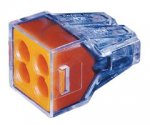dielectricunion
Member
- Location
- Bloomington IN
I'm pretty new to romex since I started off working in an area that doesn't allow it. Making up boxes with multiple cables, the guys I work with twist the bare grounds together and clip short all but the one or two to hit devices. I've also seen crimps used here.
Are there any other ways to do this? I feel like clipping the wire back that far eventually leads to something too short to work with.
How do you like to make up boxes with NM/bare EGCs?
Are there any other ways to do this? I feel like clipping the wire back that far eventually leads to something too short to work with.
How do you like to make up boxes with NM/bare EGCs?


